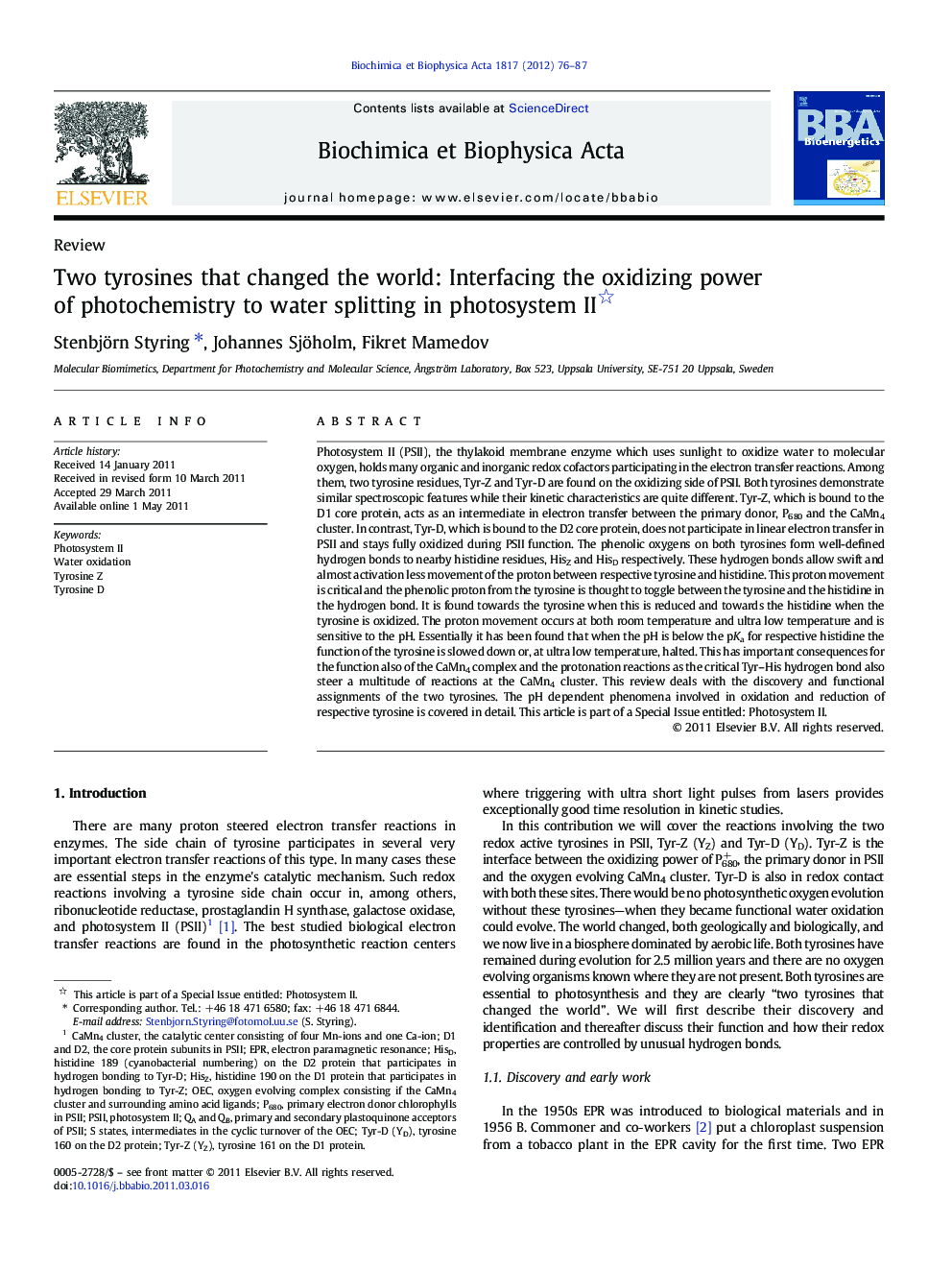| کد مقاله | کد نشریه | سال انتشار | مقاله انگلیسی | نسخه تمام متن |
|---|---|---|---|---|
| 1942341 | 1052607 | 2012 | 12 صفحه PDF | دانلود رایگان |

Photosystem II (PSII), the thylakoid membrane enzyme which uses sunlight to oxidize water to molecular oxygen, holds many organic and inorganic redox cofactors participating in the electron transfer reactions. Among them, two tyrosine residues, Tyr-Z and Tyr-D are found on the oxidizing side of PSII. Both tyrosines demonstrate similar spectroscopic features while their kinetic characteristics are quite different. Tyr-Z, which is bound to the D1 core protein, acts as an intermediate in electron transfer between the primary donor, P680 and the CaMn4 cluster. In contrast, Tyr-D, which is bound to the D2 core protein, does not participate in linear electron transfer in PSII and stays fully oxidized during PSII function. The phenolic oxygens on both tyrosines form well-defined hydrogen bonds to nearby histidine residues, HisZ and HisD respectively. These hydrogen bonds allow swift and almost activation less movement of the proton between respective tyrosine and histidine. This proton movement is critical and the phenolic proton from the tyrosine is thought to toggle between the tyrosine and the histidine in the hydrogen bond. It is found towards the tyrosine when this is reduced and towards the histidine when the tyrosine is oxidized. The proton movement occurs at both room temperature and ultra low temperature and is sensitive to the pH. Essentially it has been found that when the pH is below the pKa for respective histidine the function of the tyrosine is slowed down or, at ultra low temperature, halted. This has important consequences for the function also of the CaMn4 complex and the protonation reactions as the critical Tyr–His hydrogen bond also steer a multitude of reactions at the CaMn4 cluster. This review deals with the discovery and functional assignments of the two tyrosines. The pH dependent phenomena involved in oxidation and reduction of respective tyrosine is covered in detail. This article is part of a Special Issue entitled: Photosystem II.
Research highlights
► Tyr-Z and Tyr-D form well-defined hydrogen bonds to nearby His residues.
► The hydrogen bonds allow swift and almost activation less movement of the proton.
► The hydrogen bond is affected by pH.
► When the pH is below the pKa for the His the function of the tyrosine is inhibited.
► The Tyr–His hydrogen bond steer a multitude of reactions at the CaMn4 cluster.
Journal: Biochimica et Biophysica Acta (BBA) - Bioenergetics - Volume 1817, Issue 1, January 2012, Pages 76–87